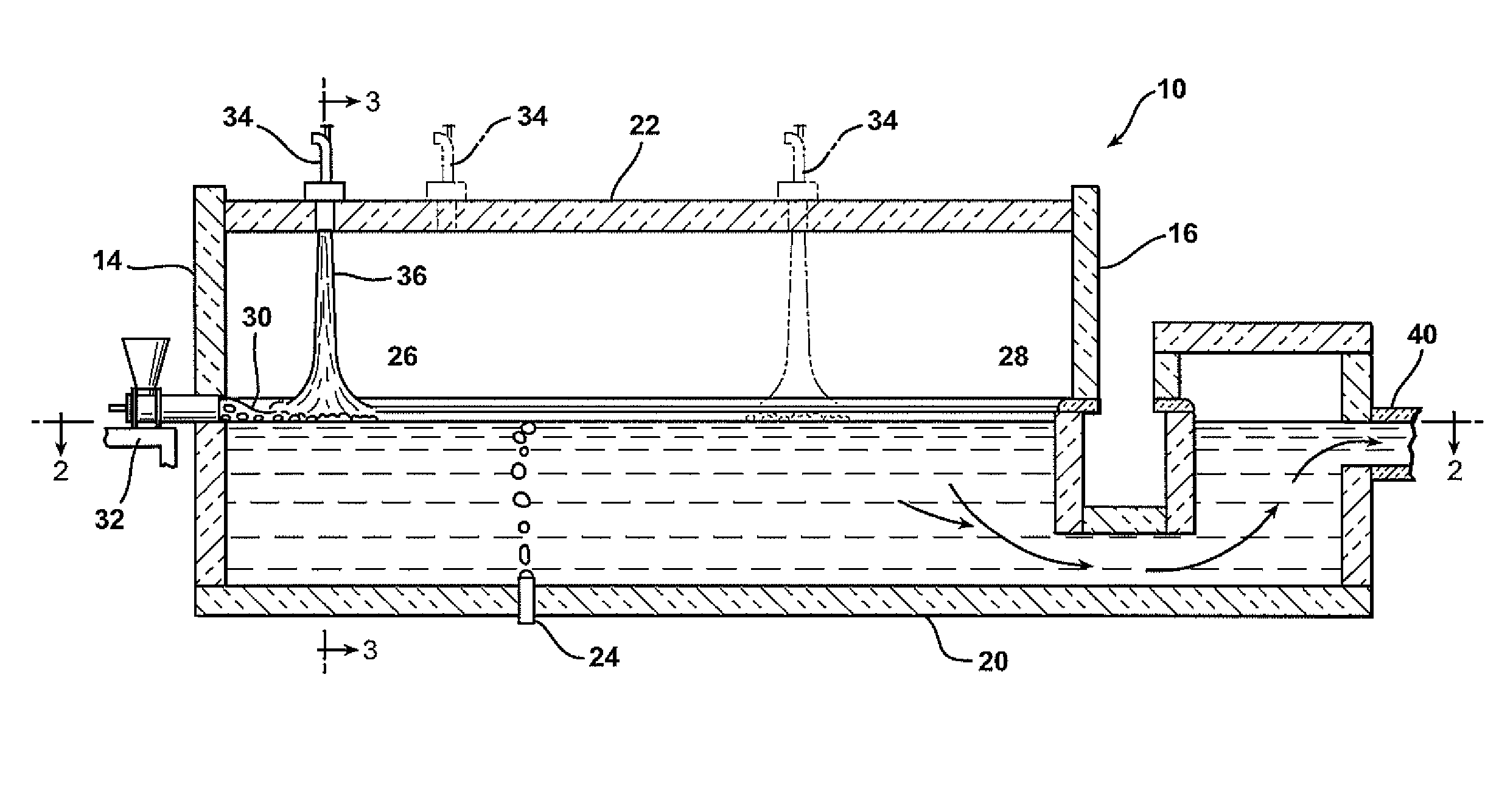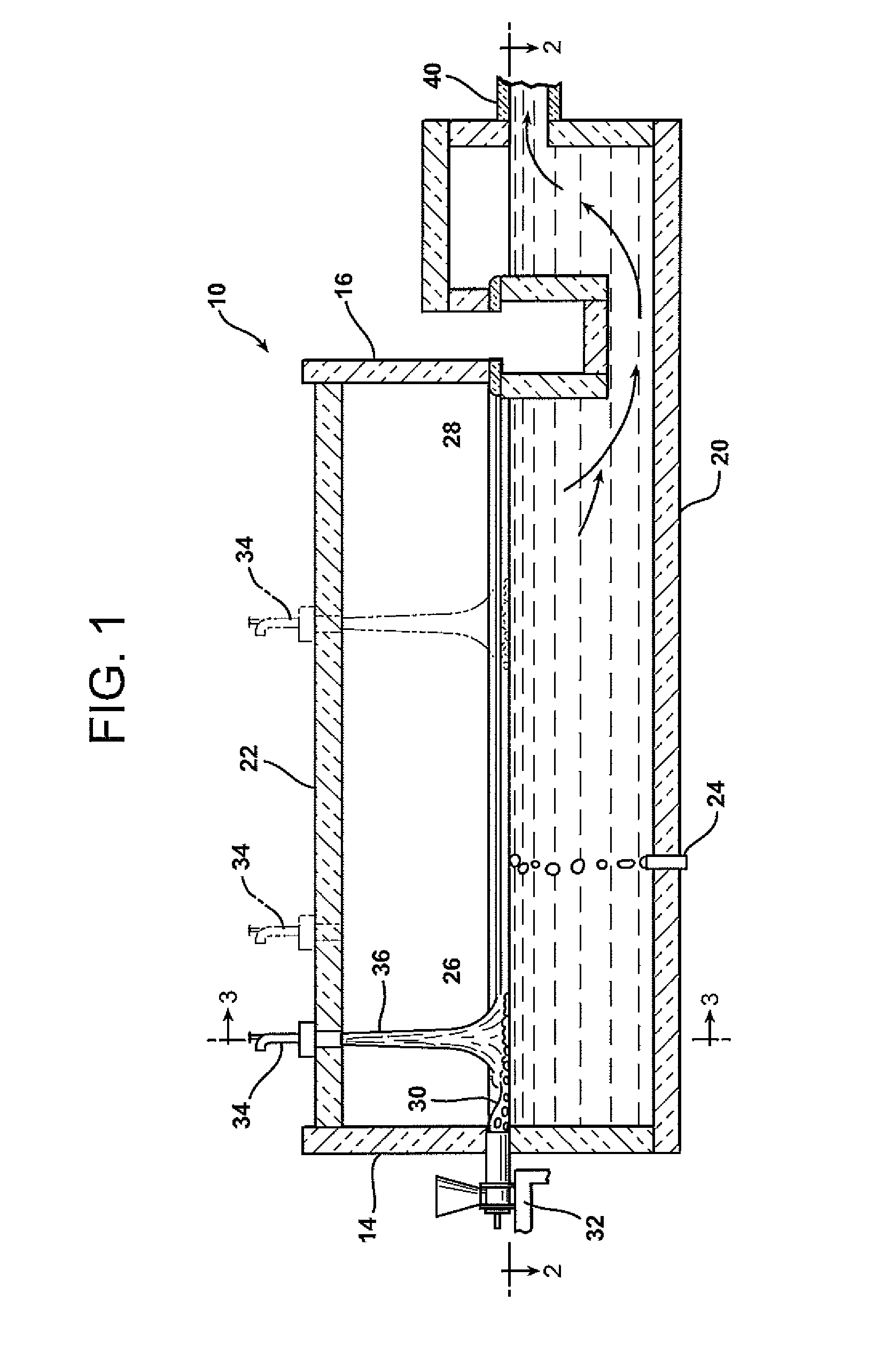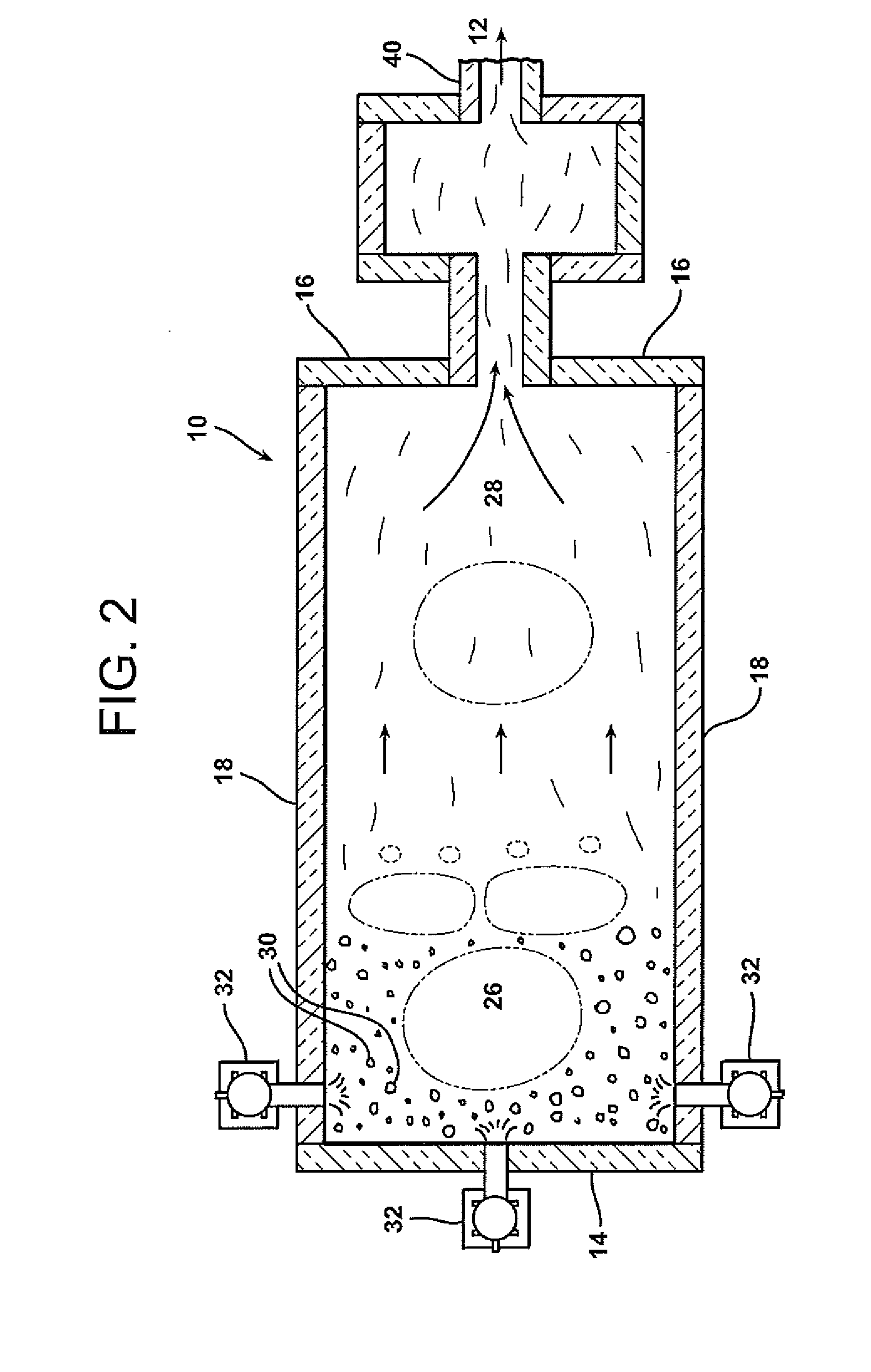Method Of Manufacturing S-Glass Fibers In A Direct Melt Operation And Products Formed There From
a technology of s-glass fibers and direct melt operations, which is applied in the direction of glass deposition burners, manufacturing tools, lighting and heating apparatus, etc., can solve the problems of high cost of platinum-lined melters, high processing temperature, and the cost of forming r-glass and s-glass fibers is dramatically higher than e-glass fibers, so as to improve manufacturability, improve structural properties, and reduce costs
- Summary
- Abstract
- Description
- Claims
- Application Information
AI Technical Summary
Benefits of technology
Problems solved by technology
Method used
Image
Examples
examples
[0034]The glasses in the examples listed in Tables IIA-IIC were melted in platinum crucibles or in a continuous platinum-lined melter for determining the mechanical and physical properties of the glass and fibers produced there from. The units of measurement for the physical properties are: Viscosity (° F.), Liquidus temperature (° F.) and ΔT (° F.). In some examples the glasses were fiberized and Strength (KPsi), Density (g / cc), and Modulus (MPsi) were measured.
[0035]The fiberizing temperature was measured using a rotating spindle viscometer. The fiberizing viscosity is defined as 1000 Poise. The liquidus was measured by placing a platinum container filled with glass in a thermal gradient furnace for 16 hours. The greatest temperature at which crystals were present was considered the liquidus temperature. The modulus was measured using the sonic technique on a single fiber of glass. The tensile strength was measured on a pristine single fiber.
TABLE II-AGlassEx. 1Ex. 2Ex. 3Ex. 4Ex. ...
PUM
| Property | Measurement | Unit |
|---|---|---|
| Temperature | aaaaa | aaaaa |
| Temperature | aaaaa | aaaaa |
| Temperature | aaaaa | aaaaa |
Abstract
Description
Claims
Application Information
 Login to View More
Login to View More - R&D
- Intellectual Property
- Life Sciences
- Materials
- Tech Scout
- Unparalleled Data Quality
- Higher Quality Content
- 60% Fewer Hallucinations
Browse by: Latest US Patents, China's latest patents, Technical Efficacy Thesaurus, Application Domain, Technology Topic, Popular Technical Reports.
© 2025 PatSnap. All rights reserved.Legal|Privacy policy|Modern Slavery Act Transparency Statement|Sitemap|About US| Contact US: help@patsnap.com



